The Cansiglio is the Second Largest Forest in Italy
With its extensive 7,000 ha of Beech and Fir, the Cansiglio forest is the second largest in Italy.
Its impressive extension will strike you immediately for its apparent uniformity, which is in fact deceptive, as it conceals many differences and peculiarities.
There are two most common accesses to the area: if you take the beautiful winding road up from then Venetian plain – through Vittorio Veneto and Fregona – you will meander first through a thick, lush beech forest, signaling oceanic and humid weather conditions, before dropping into the plateau after Passo Crosetta (1,176 m).
On the other hand, the approach to Cansiglio from Alpago will see you cross a large extent of impressive conifer woodland – a reminder of more continental weather conditions.
In either case, there comes a point at which the forest ends, and you are left with the unhindered view of an undulated, seemingly infinite open meadow.
This is the Cansiglio plateau, and its first sight cannot be easily forgotten, as it is an almost magical vision. While in summer it is a verdant area of pastures and woodland – also due to its high rainfall levels (see the first picture below), in winter the Cansiglio turns into one of the coldest corners of the entire Alps – and that's when it really looks like a small Scandinavia! (the second image shows a winter view of the plateau, as it is approached from the south).
In fact, the way in which the vegetation is distributed is an indication of the peculiar micro-climatic conditions over the plateau.
The most unusual thing to notice is that the conifer forest lies all around the edge of the vast open meadow, while Beech and other broad-leaved species cover the mountain tops, at higher altitudes (they are usually found at lower levels).
This peculiar phenomenon of thermal inversion is due to micro-climatic factors: the plateau – being like a vast basin surrounded by higher mountains – causes heavy cold air to stagnate, making it a lot colder at lower levels than higher up.
This explains why the vegetation bands are also unusually inverted – and this is just one of the many natural features that make Cansiglio one of the most peculiar micro-regions within the Italian Alps. The area is noticeable also for its Alpine flora; were it not for the ascent, in fact, you could easily forget that you are at an average altitude of around 1,000 metres, as the plateau – and the name of course aptly suggests it – looks almost flat, surrounded by low, rounded mountain tops at an average height of 1,500/1,600 metres.
Only looking further afield, the higher, jagged peaks of Alpago – closing the distant horizon to the north – will remind you that this is a mountainous region after all (an image of the plateau follows, looking towards the north, with the mountains of Alpago in the background).
The Cansiglio and its Karstic Phenomena
As a matter of fact, though, at closer examination the plateau is all but flat, peppered as it is with caves and sink-holes that are the most direct reminder of its karstic nature, as the Cansiglio is formed mainly of sedimentary rocks, which have facilitated the formation of characteristic karstic phenomena.
Perhaps, the most famous local karstic features are two caves: Bus de la Lum (literally, “The Hole of the Light”) and Bus della Genziana (“The Gentian Hole”) – which at a depth of 582 m is actually the most profound sink-hole in the area, hosting also a population of rare insects.
These cavities are part of a complex subterranean water system, which can be best appreciated at the foothills of Cansiglio – especially at the Livenza Springs ("Sorgenti della Livenza"), where incredibly clear water springs almost magically out of the living rock.
The Bus de la Lum, with a depth of 158 m, is not the deepest but certainly one of the eeriest of these karstic features, with legends and macabre facts of history associated with it.
The name is said to derive from the sight of halos emanating from the cavity, especially at night – the presence of ghosts say some, but the phenomenon is more likely to be due to the rotting carcasses of animals that have fallen into the hole.
Whether that’s a legend or not, however, there’s no escaping from the more somber reality of many civilians that were actually thrown into the sink-hole during the atrocities of Second World War.
Luckily, though, today the plateau strikes again for the wide serenity of its open landscape – and there’s certainly a lot here to provide interest for the casual walker as well as for the more scientifically oriented wanderer.
Right in the middle of the plateau is nestled the interesting Cansiglio Botanic Garden; nearby is also a small Natural History Museum (below, another image of the plateau in winter, close to the Botanic Garden).
When walking around the gently twisting roads that take you high in altitude, you may stop and wonder at the straight, tall trees whose ancestors are responsible for the fortunes of the magical city that looms in the distance from the mountain tops on clear days: Venice.
The Republic of Venice confiscated the so-called “Bosco d’Alpago” – as the Cansiglio forest was then called – in 1547, about a century after annexing the surrounding territories, and always managed these woodlands wisely.
In fact, this forest used to be also known as “Gran Bosco da Reme di San Marco” (‘remo’: oar) – a name that makes a clear reference to the fact that the government of the Republic of Venice (then called “La Serenissima” – “The Most Serene Republic”) obtained from here the wood it needed for its naval fleet, as well as the building material for the foundations of its many ‘palazzi’.
One could quite rightly say that this woodland is in fact one of the first examples of a managed forest, as Venice needed to make sure of having a plentiful supply of wood without depleting the source – while also keeping a friendly relationship with the local population, therefore allowing the locals a number of benefits (such as a certain ratio of wood use).
Still today, the woods are property of the Italian Forestry Commission, and are managed through Veneto Agricoltura following a detailed plan, in combination with cattle farming.
While in the fields the animals roam freely, the milk produced is collected by a Co-operative dairy that gathers all farmers throughout the plateau.
The Cimbri of Cansiglio: an Old Civilization
As well as a compelling nature, the Cansiglio has also an interesting story to tell. The plateau was once inhabited by the Cimbri – a nomad population of German origin that established itself in the area during the 18th century, coming mainly from nearby Altopiano di Asiago.
They were hunter-gatherers, and had a semi-tribal way of life. They used to build their dwellings entirely in wood; in fact, woodwork was their main skill, and their ways to make a living included charcoal production, the fashioning of boxes (they were literally known as “Cimbri scatoleri” – ‘box makers’) and the making of wooden tiles used as roof cover (locally known as ‘scandole’).
Unusually for this area, their dwellings were also built entirely in wood, and the typical Cimbrian house was then known as ‘Huta’ – a name clearly showing their German background (the same word would be ‘Hütte’ in modern German).
The descendants of the Cimbri – albeit not very numerous – still live scattered in the villages around the plateau today, but the fact that they were not sedentary means that there is very little left in the way of architecture.
Perhaps, the most striking places to visit in order to acknowledge oneself with this old and fascinating population are the villages of Vallorch (portrayed in the picture below), Pian Canaie, Le Rotte and Canaje Vecio.
Most of these villages were destroyed during World War II hostilities, but at Vallorch one can still admire some wooden huts, reconstructed with the traditional techniques (one of them is still lived in!). There is also a bar/restaurant lodged in an old Cimbrian hut, so that you can enter and explore for yourself.
Pian Canaie strikes instead as a haunting witness of the past – a ghost village in the middle of the forest, where only the sediments of old homes remain (a ‘Huta’ has recently been rebuilt for demonstrative purposes, and it is pictured below, showing clearly the ancient building technique known as 'Blockbau').
However, if you want to acknowledge yourself more with the culture of this old civilization, a stop at the “Museo Etnografico della Civiltà Cimbra” ('Ethnographic Museum of the Cimbrian Civilization') is a worthwhile visit.
Situated at Pian Osteria (one of the former Cimbran villages), there you will find also an interesting documentation on the history of the forest, with archaeological finds and other artifacts on display.
In any event, despite being scattered, what is left of the Cimbri is still a vibrant community, able to organize a popular event that takes place every year at Pian Osteria in August.
The Cansiglio Still Looks Like an Untamed Forest
All in all, then, it is quite clear that Cansiglio provides interest on many different levels, from a naturalistic as well as from an historical point of view.
But perhaps, the single best piece of information to bear in mind is that although this area still looks today like a relatively vast expanse of untamed forest, this sight is in fact deceptive. Even though it is true that it is possible to roam for hours without encountering many traces of human presence (despite being only an hour’s drive away from the hustle and bustle of Venice), it is also a fact that what we see today is the product of a very careful management – so, in that sense, it is not 'wild'.
The Cansiglio is well equipped with trails that are clearly marked (with capital letters); some of them are very easy and keep at a low altitude, and are therefore suitable to all abilities – not just the experienced walker – while other trails climb higher up in altitude.
An easy circular trail – marked with the letters A, B, E, M, S, and collectively indicated as "Anello del Cansiglio" ('Cansiglio ring') – follows by and large the edge between meadow/pastures and woodland, and provides a very good introduction to the Cansiglio, offering serene views on its central plateau, while all the area's main features are encountered in sequence (karstic phenomena, woodland, Botanic garden and the "G. Zangrando Ecology Museum").
In any case, it is a good idea to bear in mind that the most interesting trails will take you out in areas almost completely devoid of human presence, so all the usual precautions when walking in a mountain environment should be taken (in the closing image below, a winter view of the mountains of Alpago, which surround the plateau to the north).
If you have been intrigued by what you've just read, you can find more detailed information on a page dedicated to the nature of Cansiglio.
I have also devised a page that deals specifically with the Cansiglio Botanic Garden, which gives a general introduction to the garden, while yet another page goes more in-depth, offering specific information on all the different plant habitats that can be encountered while walking not just in the garden but in the Cansiglio in general, as it is focused on its Alpine Flora.
Cansiglio's Botanic Treasure Troves – and Beyond!
There are also other interesting locations to visit in the region and within easy reach from the Cansiglio's central plateau.
When considering the areas noteworthy for their flora, important sites are to be found at the edge of Cansiglio's forest, and these include Monte Pizzoc (1,565 m) and Coll'Alto (880 m); on clear days, both of these places offer outstanding views on the Venetian plains.
The first locations (Monte Pizzoc) is still within a karstic setting, and it is especially the open meadows at Cornesega that display an amazing array of flora, amongst which – in late spring – are the soft lilac clouds of Thalictrum lucidum, a showy purple Echium, a bright pink Pedicularis and many others: all plants that point to the edaphic aridity of these habitats.
In the second location (Coll'Alto), given the lower altitude, are visible plants that one would associate more with the warmer habitats of the Pre-alpine hills; one can include here the Knapweed Centaurea triunfetti, a purple-flowered Wild Lettuce (Prenanthes purpurea) and several species of Orchids.
Looking further afield, and lying outside of the central plateau, at the foothills of Cansiglio there are also other important locations worth a visit, which could easily be included within the context of a trip to the area.
Among these, one certainly has to mention the archaeological settlement by the lakes of Revine – an area carved by ice during the last glaciations, a short distance away from the pleasant historic town of Vittorio Veneto – or the beautiful location where most of the water collected from Cansiglio's main plateau drains naturally, due to the karstic nature of the terrain: the mesmerizing springs of the Livenza ('Sorgenti della Livenza'). Another location worth a detour are the Grotte del Caglieron – a noteworthy complex of natural and artificial caves crossed by an easy Nature trail which is literally dug into the canyon.
The Old Trail of the Cimbri (“Troi dei Cimbri”)
The path that is being proposed here is the fruit of a collaboration between the ‘Corpo Forestale dello Stato’ (the Italian Forestry Commission), the municipality of Fregona and the cultural association “Cimbri del Cansiglio”. This route aims to re-use paths that were habitually used – since the 1700s – by the Cimbri of Cansiglio living in the villages of Vallorch and Le Rotte to reach the towns at the foothill of the Cansiglio plateau, in the district of Fregona, in order to barter their few artisan products, crafted with the beeches of the forest. But also many inhabitants of the surrounding villages would have made use of this trail; these were lumberjacks, woodworkers, charcoal-makers, dairy-workers or seasonal gatherers (in this latter case, mostly women) of woodland produce – such as mushrooms, raspberries and strawberries.
The path that is being proposed here is the fruit of a collaboration between the ‘Corpo Forestale dello Stato’ (the Italian Forestry Commission), the municipality of Fregona and the cultural association “Cimbri del Cansiglio”. This route aims to re-use paths that were habitually used – since the 1700s – by the Cimbri of Cansiglio living in the villages of Vallorch and Le Rotte to reach the towns at the foothill of the Cansiglio plateau, in the district of Fregona, in order to barter their few artisan products, crafted with the beeches of the forest. But also many inhabitants of the surrounding villages would have made use of this trail; these were lumberjacks, woodworkers, charcoal-makers, dairy-workers or seasonal gatherers (in this latter case, mostly women) of woodland produce – such as mushrooms, raspberries and strawberries.
A brief description of this intense activity is provided by Antonio Caccianiga, Chief Magistrate of Treviso, who around 1867 traveled from Fregona to Cansiglio, precisely along this trail. This is part of his report: “We have crossed Fregona and have descended from our wagons in Mezzavilla, where some mules were awaiting us. (…) The trail was animated by a continuous passage of women descending from the mountain, the back folded under wicker baskets covered in charcoal, or climbing up to pick raspberries and strawberries in the woods. (…) We crossed the green pastures that flanked the ‘strada remiera’ (‘route of the oars’) – so-called as it was used to transport the oars under the ancient Republic of Venice (…). We then crossed the thick of the woods and descended into the valley of Fontanaboi, where we found a spring and a shed that also serves as dwelling for a family of ‘scattolai’ (another nickname that refers to the Cimbri) (…). The interior of this hut is composed by a kitchen that also serves as workshop and bedroom (…). The fireplace has no chimney, and the smoke exits through the door, the windows, and other openings in the walls and on the roof. (…) In more modest proportions, also the charcoal-makers who exercise their trade in various locations throughout the woodland erect similar weird shacks. By descending towards Fontanafagher (a name that literally means ‘Beech Spring’, in the local patois), one goes along the Bear Valley (‘Valle dell’Orso’), then crosses the plains of Costa Biaver (or Costa d’Aver), replete with the abundant red of raspberries, and by crossing over to Le Rotte one eventually ends up on the Cansiglio plateau. (…) For now, the proceedings of Cansiglio derive from selling firewood and timber for woodwork; from the sleepers that are being supplied to the railways, and the workshops of the Cimbri ‘scattolai’ that made good sales in the nearby provinces, whose goods are being sent from Venice to Algeria, the Jonian islands and even Alexandria of Egypt. This latter industry was introduced by a colony of Cimbri. In 1797, four Azzalini brothers from Rovana (a locality in the ‘Sette Comuni’ of Asiago) obtained the right to establish themselves in the woods in order to exercise their trade as ‘scattolai’. Seventy years have gone by since their arrival in the woods, and such was their prosperity that today there are 240 people, split into 40 families”.
General characteristics
General characteristics
The Cansiglio is a karstic area that dominates the Venetian plains, and its conformation is like a ‘bowl’ of elliptical shape, at whose center is a plateau at an average altitude of about 1,000 m above sea level. Over the plateau, a great number of sink-holes and dolines of karstic origin are visible. The noteworthy accumulation of impermeable material at the bottom of the dolines – just like the clay deriving from the disintegration of the ‘scaglia’ – can transform them into small pools locally known as ‘lame’.
An important aspect that characterises and differentiates the Cansiglio from the surrounding areas – such as Alpago – is its peculiar climate. Precisely for its conformation – shaped like a ‘bowl’ – from the internal slopes of the plateau descend cold and heavy air currents that will then stagnate in the central basin (this phenomenon is known as ‘thermal inversion’). These climatic variations also influence, in turn, the vegetation, which is modified in its succession. In fact, in the lower altitude band, one can find pastures and meadows, normally present only at higher levels, followed by conifer woodland (even though the latter are mostly the result of spruce plantations of artificial nature), to then finish with montane beech wood higher up, in the altitude band comprised between 1,050 and 1,400 meters above sea level.
Flora
Flora
The forest is mostly composed of pure Beech, with columnar plants of majestic bearing that sometimes reach 30 m in height. Relatively rare is Silver Fir (Abies alba), less so Norway Spruce (Picea abies) – simply because the latter is mostly the result of artificial plantations. Precisely for the beauty of the beech forest present here – mostly due to genetic selection of the best specimens – seeds are being collected in the forest, stored and replanted by the ‘Corpo Forestale dello Stato’. Besides, these majestic plants were historically used by the Republic of Venice in order to craft oars for its powerful fleet. The Cimbri – called here by the Arsenal of Venice during the 1700s – made a particularly meaningful contribution to such activity.
The other plant species present in the undergrowth include Raspberry (Rubus idaeus), Herb Paris (Paris quadrifolia), Purple Mountain Lettuce (Prenanthes purpurea), various Ferns, Green Hellebore (Helleborus viridis), Mezereon (Daphne mezereum) and the Windflower Anemone nemorosa, besides various types of mushrooms and lichens. Along the route, one can observe several fenced areas, which are part of the project CONECO-FOR – the National Network for the Control of the Forest Ecosystems, instituted in 1995 by the Italian Forestry Commission. This is a system that allows to assess the state of health of these woodlands. Among the surveys that were executed here, of major relevance is the monitoring of the rainfall amounts, of plant chemistry and the leaves’ structure, of the soil composition, with the goal to individuate the more harmful elements present in the atmospheric pollution for the woodlands (a more detailed description of the LIFE+ManFor trail can be seen on a dedicated page, Cansiglio LIFE Project).
Fauna
Fauna
Thanks to the interdiction to hunting for over a century, the Cansiglio forest presents a rich and interesting fauna. Amongst the large herbivore mammals one can admire Red Deer (Cervus elaphus, present in large numbers) and Roe-deer (Capreolus capreolus), as well as Fallow Deer (Dama dama) – the latter a species introduced by man. Other mammals present in the area include: European Hare (Lepus europaeus), Fox (Vulpes vulpes), Badger (Meles meles), European Polecat (Mustela putorius), Least Weasel (Mustela nivalis), European Pine Marten (Martes martes), Beech Marten (Martes foina), Eurasian Red Squirrel (Sciurus vulgaris) and Fat Dormouse (Glis glis). In the past, there have also been reports of large predators such as Brown Bear (Ursus arctos) and Eurasian Lynx (Lynx lynx), which – however – must be considered occasional sightings.
There are many species of passing, migratory and non-migratory birds too: amongst the first category, we can mention (in the ‘lame’): Mallard (Anas platyrhynchos), Garganey (Anas querquedula), Grey Heron (Ardea cinerea) and occasionally Black Stork (Ciconia nigra); amongst the two latter categories are Eurasian Woodcock (Scolopax rusticola), Song Thrush (Turdus philomelos), Fieldfare (Turdus pilaris), Common Blackbird (Turdus merula), Barn Swallow (Hirundo rustica), European Robin (Erithacus rubecula), Common Starling (Sturnus vulgaris), Two-barred Crossbill (Loxia leucoptera; occasional) and the rarer Western Capercaille (Tetrao urogallus) and Black Grouse (Tetrao tetrix), plus several species of Tit and Finch.
Amongst the diurnal raptors, one can count Common Buzzard (Buteo buteo), Eurasian Sparrowhawk (Accipiter nisus), Northern Goshawk (Accipiter gentilis), Common Kestrel (Falco tinnunculus), Black Kite (Milvus migrans) and Red-footed Falcon (Falco vespertinus), while amongst the nocturnal raptors are Eurasian Eagle-owl (Bubo bubo), Long-eared Owl (Asio otus), Eurasian Pygmy Owl (Glaucidium passerinum), Tengmalm’s Owl (Aegolius funereus), European Scops Owl (Otus scops), Barn Owl (Tyto alba) and Tawny Owl (Strix aluco). Rarely it is also possible to spot the majestic Golden Eagle (Aquila chrysaetos), which nests on nearby Monte Cavallo (2,250 m).
Amongst the reptiles are Viper (Vipera aspis and V. berus), Green Whip Snake (Hierophis viridiflavus), Grass Snake (Natrix natrix) and the Italian Slow Worm (Anguis veronensis). Amongst the amphibians, in the proximity of the ‘lame’ one can spot Fire Salamander (Salamandra salamandra), European Toad (Bufo bufo), Alpine Newt (Ichthyosaura alpestris) and Northern Crested Newt (Triturus cristatus).
http://www.italy-tours-in-nature.com/cansiglio.html
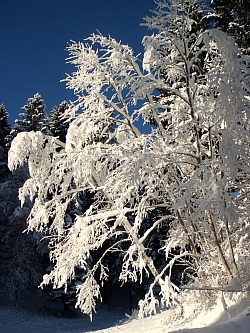
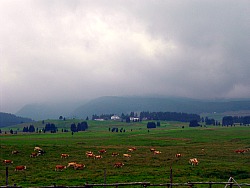
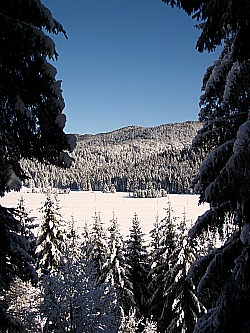
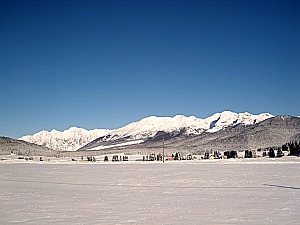
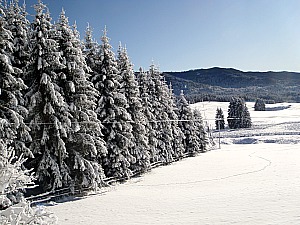
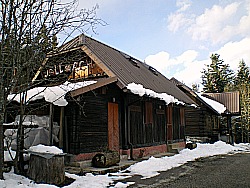
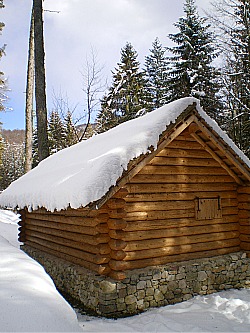
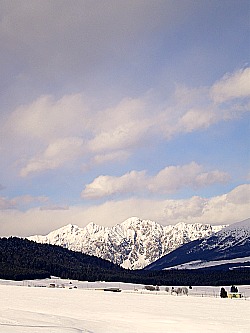





No comments:
Post a Comment